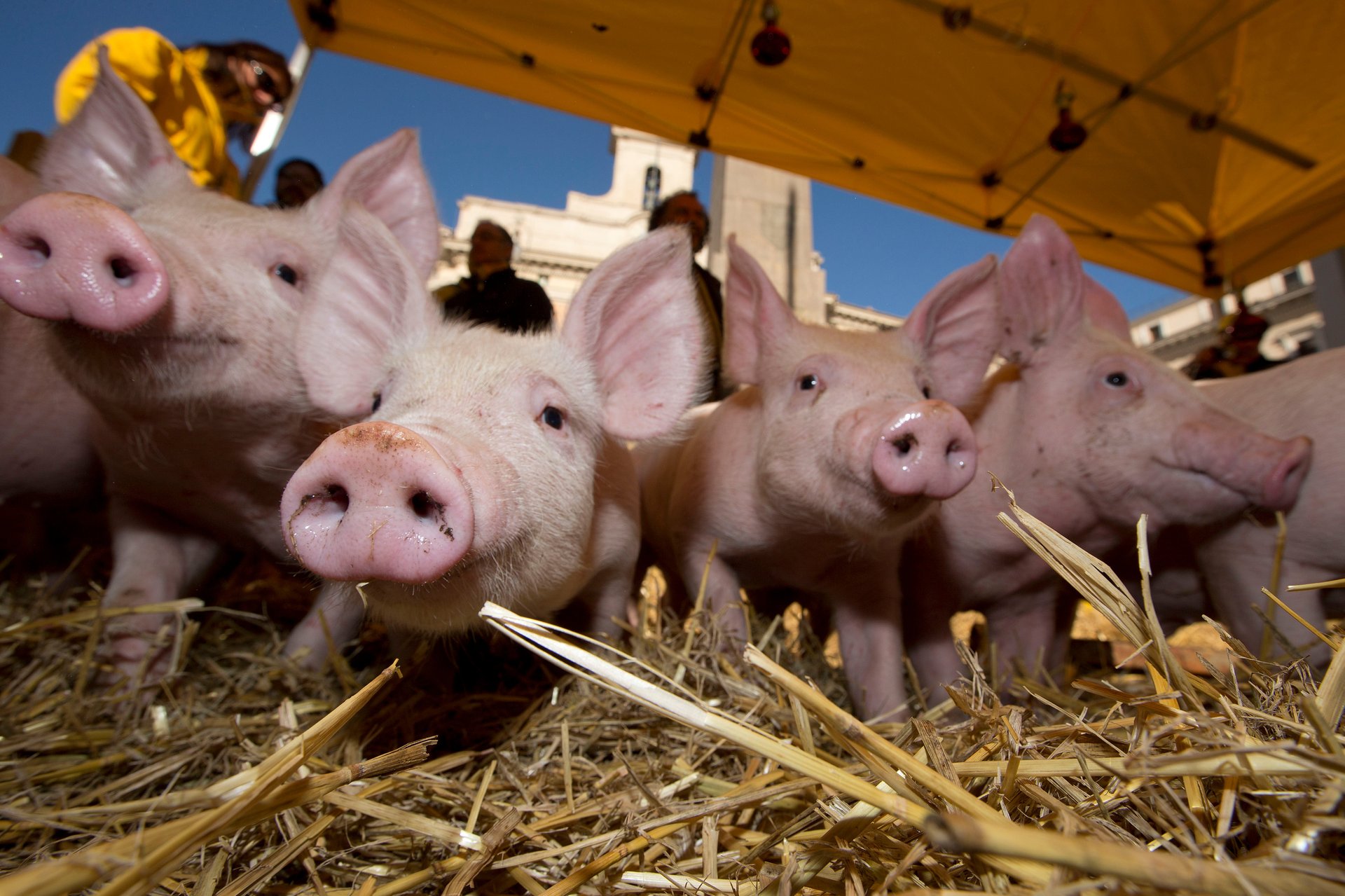Trump is deregulating food safety in the pork industry
A new rule approved on September 17 by US president Donald Trump deregulates part of the process that makes sure the nation’s pork supply is safe to eat—reducing oversight and relying more heavily on the industry to monitor itself.


A new rule approved on September 17 by US president Donald Trump deregulates part of the process that makes sure the nation’s pork supply is safe to eat—reducing oversight and relying more heavily on the industry to monitor itself.
To understand the changes (pdf), imagine the inside of a slaughter facility. The animals are killed and then broken into parts. Those parts then go down a mechanical line, where trained government inspectors are charged with looking at each one as it passes by, hopefully catching any defects or abnormalities. If they spot something suspicious, the carcass is removed and it won’t go to market. The lines generally move pretty quickly, but regulations cap their speed at 1,106 hogs per hour (3.5 seconds for every 250-pound pig). That’s a lot to keep track of, so the US Department of Agriculture assigns multiple inspectors to the task.
Really big plants commonly have seven government inspectors working the hog line. One looks at the whole pig carcass, three look at the heads, and the last three are looking at everything else.
So here’s what the Trump administration is changing, starting in November:
- Hog slaughter plants can now opt into a new system in which they can hire their own people to replace some—but not all—federal inspectors.
- There is no longer a cap on line speeds. Companies can set them as they see fit.
The regulatory change has roiled public health watchdogs, who claim the changes give meat companies too much authority and not enough oversight. They claim the industry will easily be able to cut corners, which will ultimately expose the public to more foodborne pathogens.
Picture it
Still, it’s hard to tell what impact we should we expect from this new set of deregulatory actions.
America’s per capita consumption of pork has remained mostly consistent over time, even as beef consumption has declined and chicken skyrocketed. So it’s not as though previously-mandated line speeds are outdated, though there has been a 30% increase in US pork exports over the last decade, from 1.86 million tons in 2009 to 2.43 million tons in 2018.
And over the last decade, there’s no indication from USDA data that we’ve gotten better at catching pathogens on pork meat. The data are pretty scattered.
For its part, the pork industry is thrilled. They claim they have every incentive to ensure only safe meat gets to the market, and that technological advances used to test meat for pathogens will keep bad meat from getting into consumer hands.
“The US pork production system is the envy of the world because we continuously adopt new practices and technologies, while enhancing safety, quality and consistency,” the National Pork Producers Council said in a statement.
In other words, the way we inspect food is changing, and new technology is the answer to a system that’s outdated. The outdated aspect is true. The USDA has kept the total number of meat inspectors (which includes those monitoring beef and chicken) at about 7,800 since 1980, even as per capita meat consumption has gone up from 193.7 pounds to 219.5 pounds.
But even in the presence of better technology, a problem reported is time and money lost for the company. Under federal inspectors, there is no such problem because government inspectors don’t answer to the meat companies; there is no potential fear of retribution.
“The implementation of the rule will result in the fox guarding the henhouse,” said watchdog group Food & Water Watch. “Trump’s USDA is clearly prioritizing the meat industry’s interests against the will of the American people, and in doing so, is wreaking havoc on public health.”
Technological innovation can certainly help in the quest to keep Americans safe: Full-genome sequencing, for example, helps us track down foodborne pathogens. But that’s after meat is already in the market. With less oversight and few public details on exactly what other technology meat packers will use to keep us safe, people are left to look at their plates and wonder.